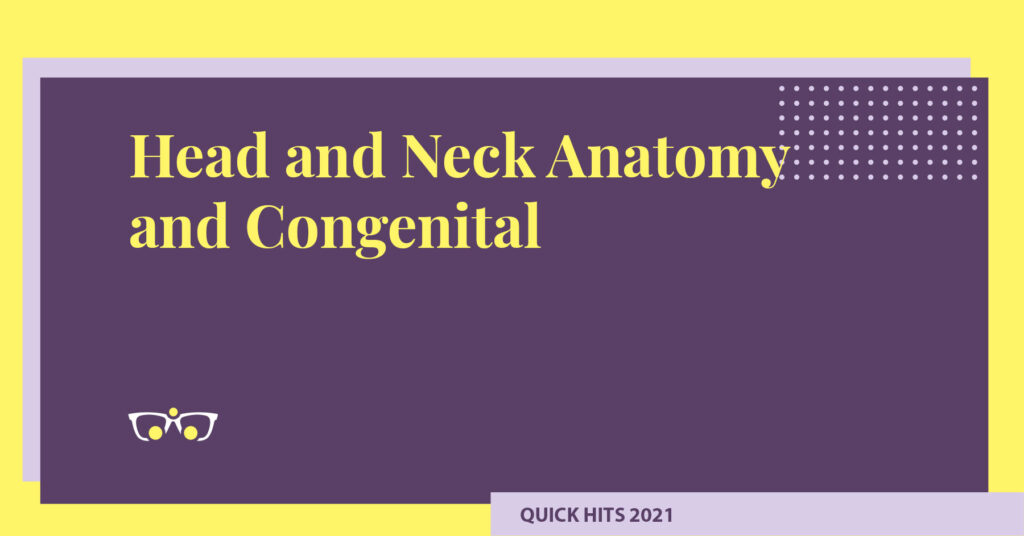Anatomy of the breast:
- Borders of the breast: sternum, clavicle, IMF, anterior border of the latissimus muscle
- Nipple areolar complex sensation is derived from the lateral fourth intercostal nerve. After a mastectomy the anterior fourth intercostal nerve is most likely to provide nipple sensation as it courses more superficially.
Benign breast disease:
- Phyllodes Tumor: seen has stromal and epithelial hyperplasia on pathology. Wide surgical margins of at least 1cm are recommended to decrease risk of recurrence.
- Common fibroadenoma: most common breast tumor in adolescent females (14-16). Treatment is excisional biopsy or observation. Pathology reveals stromal epithelial balance.
- Giant fibroadenoma is defined as >5cm in size. May have rapid growth or bluish hue overlying the breast.
- Complex fibroadenomas: characterized by fibrocystic changes on glandular tissue with underlying features of common fibroadenoma.
- Papilloma: polyp of epithelium lined breast ducts
- Nipple papillomas present typically with bloody nipple discharge. Treatment is excision
- If this is fully excised in breast reconstruction or reduction no further management is necessary (maybe a mammogram if this is offered in test question)
- Fibrocystic changes: solitary mass that may fluctuate in size and tenderness during menstrual cycle
- Not linked to increase risk of breast cancer
- Atypical hyperplasia: 4-5 fold increased risk for developing breast cancer, associated with hormone therapy
- Next step to determine risk for breast cancer would be to calculate gail model risk assessment
Breast Cancer Screening:
- ACS recommends average risk patients receive screening mammogram at 40-44 years (optional); annual screening from 45-54, and biennial screening for >55 years of age who are in good health and have a life expectancy of at least 10 years.
- In a newly found mass <30 years evaluate with ultrasound; >30 diagnostic mammogram with ultrasound.
- Screening mammography consists of two views and is appropriate for asymptomatic patients
- Diagnostic mammography incorporates additional views for abnormalities listed above.
Breast Cancer:
- Ductal adenocarcinoma is the most common form of breast cancer and arises from glandular tissue.
- 12% of women develop breast cancer
- Family history increases that risk to 15%
- Risk increases up to 45% if there is a history of bilateral and premenopausal familial cancer.
- Risk factors for hormone sensitive cancer: post-menopausal obesity.
- Late menarche, early menopause, breast feeding, early age of first pregnancy are all associated with decreased risk for hormone-sensitive breast cancers.
- Women with breast cancer at a higher risk for metachronous lesion of the contralateral breast.
- Staging of breast cancer: LCIS (lobular carcinoma in situ) is not in the TNM staging system although it increases the risk of developing breast cancer in the future.
- T: Tis (in situ); T1 <2cm, T2 2-5cm, T3 >5cm, T4 extension into chest wall or skin
- N0 no lymph nodes, N1 1-3 nodes, N2 4-9 nodes, N3 >10 nodes
- M0 no metastasis; M1 metastasis
- National Comprehensive Cancer Network (NCCN) guidelines for radiation therapy: positive sentinel node with unknown status of axillary nodes, 1-3 positive nodes on permanent histology, close surgical margins <5mm, positive surgical margins or inability to get clear margins, four+ positive lymph nodes
- Breast conserving therapy: breast conserving therapy followed by radiation
- Pre-operative chemotherapy increases chances of partial mastectomy or lumpectomy.
- Contraindications to breast conserving therapy include: multicentric disease with two or more tumors in separate quadrants of the breast such that they cannot be encompassed by a single excision, diffuse or malignant microcalcifications on mammography, history of prior radiation in the same breast or chest wall, pregnancy, persistently positive margins despite re-excision
- Relative contraindications to breast conserving therapy include: lupus and scleroderma, BRCA-1, small sized breasts
- Nipple Sparing mastectomy: exclusion criteria include tumor size >5cm, location <2cm from the nipple, nipple discharge or areolar discharge, paget’s disease, axillary disease, tumor involvement on retro areolar biopsy, lymphovascular invasion, HER2 +, HEGF2 +
- Contralateral prophylactic mastectomy: increases risk of surgical site complications.
- Women with BRCA benefit from risk reduction
- No proven oncologic benefit to contralateral prophylactic mastectomy (CPM) in those with average risk. It has not been proven to improve cure rate, reduce recurrence, and INCREASES number of operations
- Radiation therapy sequela: acute includes erythema, edema, desquamation, hyperpigmentation, and ulceration; chronic injury includes atrophy, dryness, telangiectasia, dyspigmentation, dyschromia, and fibrosis.
- Wounds can occur chronically after radiation (years later) from fibrosis and necrosis (IE osteoradionecrosis of the ribs)
- BRCA1/2 are associated with breast/ovarian cancers; can also be associated with pancreatic and prostate cancer
- Women with BRCA1 have 80% risk of breast cancer by 65, 10% risk for ovarian cancer.
Medications:
- Aromatase inhibitors impair conversion of androgens to estrogen
- Tamoxifen: selective estrogen receptor modulator
- Associated with thromboembolic events, increased rates of flap loss and decreased rates of flap salvage
- Should be held 28 days pre-operatively in patients undergoing microsurgical breast reconstruction
Autologous Breast Reconstruction
DIEP (Deep Inferior Epigastric Artery Perforator) Flap
- Perfusion zones: Medial row perforators are zones I and II (ipsilateral and contralateral). Lateral rows are zones III (ipsilateral) and IV (contralateral)
- Medial row perforator flaps are perfused in this order I-II-III-IV
- Lateral Row perforator flaps are perfused in this order I-III-II-IV
- Pfannenstiel incisions typically divide the superficial epigastric circulation and gives this flap more robust venous circulation (decrease in fat necrosis of flap) due to the delay phenomenon.
- Sensation: may coapt intercostal nerves from breast to segmental intercostal nerve through flap (rectus) typically T10.
- Studies support improved patient satisfaction with autologous reconstruction in the setting of unilateral reconstruction; also provides better symmetry when compared to implant
SIEA (superficial inferior epigastric artery) perforator flap: have higher failure rates than DIEP flaps , less muscle bulges, similar fat necrosis rates
Pedicled TRAM (transverse rectus abdominus muscle)
- Bases blood supply on SIEA which is topically less robust than DIEA system. This is performed by surgical delay by ligating the DIEA system may facilitate overall viability
- Subcostal incisions have risk of non viability due to ligation of superficial system.
PAP (profunda artery perforator) flaps:
- Skin island for PAP is located on the posteromedial thigh in the gluteal fold (can take around 7cm width)
- Based on perforators from profunda artery
TUG (transverse upper gracillis) flap:
- Ellipse of anteromedial thigh with superior border within the gluteal fold
- Based on perforators from the descending branch of medial circumflex artery
IGAP (inferior gluteal artery perforator) flap:
- Design includes ellipse of skin of the inferior buttock with inferior border within the gluteal fold
SGAP (superficial gluteal artery perforator) flap:
- Design includes ellipse of skin in the middle buttock from PSIS (posterior superior iliac spine) to the apex of the greater trochanter.
Complications of free flap breast reconstruction
- Venous congestion can occur from venous thrombosis, inadequate perforator selection, superficial venous dominance. This will present as blue color, brisk capillary refill, cooler skin temperature, rapid bleeding of dark blood on pinprick
- Treatment by emergent exploration. Salvage rates are higher if explored within 6 hours.
- If venous anastomosis intact, consider second anastomosis with SIEV (superficial dominant system).
- SLE: higher risk for thromboembolic events, but overall similar profile for flap failure, steroids may inhibit wound healing and create higher rates of postoperative hernia.
- Morbid obesity >35 BMI most likely to have delayed healing of donor site; cesarean scar also contributes to delayed wound healing of donor site.
Tissue Expanders
- Antibiotic prophylaxis for tissue expanders: CDC guidelines include 24 hours of perioperative antibiotics beginning 30 minutes prior to skin incision.
- Radiation to the tissue expander has increased rates of reconstructive failure as compared with radiation to implant, however, has a better aesthetic result (less capsular contracture).
- Tissue expander based reconstruction remains a good choice in patients whose radiation status is undetermined (may receive radiation) as it preserves the patient’s skin envelope and keeps open options for definitive final reconstruction.
- Carbon dioxide expander has the inability to deflate. Outcomes show no difference in complications and a faster expansion process overall.
Implants
- Preventive infection measures include presurgical chlorhexidine washes, proper antibiotic timing (30 minutes before incisions), and continuing antibiotics 24 hours after surgery.
- Fat grafting can be used in conjunction with implant placement. This has no higher risk for breast cancer but can increase incidence of benign lesions (cysts and calcifications).
- Periareolar incisions for nipple sparing mastectomies cause higher rates of nipple necrosis when implant reconstruction is used.
- Fat grafting may be used to address contour deformities in implant based breast reconstruction.
Implant Position
- Subpectoral: seen in thin patients, older reconstructions
- Can contribute to animation deformity in which the implants move laterally during pectoralis animation.
- Pre-Pectoral: typically utilized with covering of an acellular dermal matrix (ADM).
- The use of ADM is associated with decreased capsular contracture rates, seroma rates however are increased.
Complications with tissue expander and implant based reconstruction:
- Radiation increases risk for capsular contracture, seroma, wound healing, and infections.
- Infection rate around 8% for breast reconstruction. Most common organisms are staphylococcus for gram positives and pseudomonas for gram negatives.
- Risk factors for failure of salvage attempts include culture positive staph, atypical pathogens, elevated temperature and elevated white blood cell count. Associated risks include obesity, poorly controlled diabetes, smoking, history of radiation, post op seroma, implant biofilm
- Implant position does not affect salvage rates
Contralateral Symmetry procedures: frequently necessary to achieve symmetry after mastectomy and reconstruction
- Include mastopexy, reduction mammaplasty, augmentation/mastopexy
- Can be performed safely with unilateral autologous tissue reconstruction
Nipple Reconstruction:
- Blood supply based off of subdermal plexus and considered random pattern blood supply
- Techniques include skate flap, star flap, C-V flap.
- The most common complication includes loss of projection.
- Has increased rates of satisfaction, quality of life
BIA-ALCL (breast implant associated anaplastic large cell lymphoma)
- Typically presents as late seroma after textured implant placement
- Workup with ultrasound followed by FNA
- CD30 positive and ALK negative
- Capsules in BIA-ALCL have significant presence of the gram negative bacteria ralstonia compared to nontumor capsules
Miscellaneous
- Biggest factors for receiving breast reconstruction from previous studies include distance from reconstructive surgeons and insurance status.
- Post-menopausal hormone replacement therapy: increased risk for invasive breast cancer, decreased diabetes and osteoporosis (no longer thought to impact coronary artery disease?)
- Contrast induced nephropathy: prevention measures include optimization of fluids, avoidance of contrast media, avoiding repeated exposures
- Mondor Disease: superficial thrombophlebitis of the breast, common after procedures
- Presents as pain, redness, and edema, and the presence of thickened tender cord. This resolves in 4-6 weeks with symptomatic treatment (NSAIDS, warm compresses).
- NEJM: preventive measures for SSI (surgical site infection) include mupirocin twice daily to nares, chlorhexidine scrubs 5 days prior to surgery; cefazolin given 30-59 minutes prior to skin incision, smoking cessation at least 4 weeks before and after surgery
- Cefazolin dosing 2g, 3g if over >120kg
- Women’s health and cancer rights act: requires insurance plans to cover the cost of breast reconstruction after mastectomy
- Includes all stages of reconstruction as well as contralateral procedures to provide symmetry
- Does not apply to women undergoing breast conservation therapy (lumpectomy with radiation)
- VTE using the Caprini risk assessment model
- ASPS VTE task force recommends those undergoing elective plastic surgery who have score of 7 or greater to have VTE risk reduction strategies: limiting OR time, weight reduction, discontinuation of hormone therapy, early postoperative mobilization, consider extended use of LMWH
- Major plastic surgery cases (>60 minutes) should undergo prevention
- Caprini risk 3-6 and major surgery should have LMWH or UH during surgery.
- Highest risk factors include age >75, DVTPE hx, Positive factor V leiden, HIT, elevated anticardiolipin or serum homocysteine or prothrombin or lupus anticoagulant, congenital or acquired thrombophilia, family history of thrombosis.







